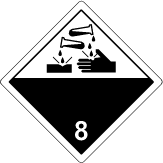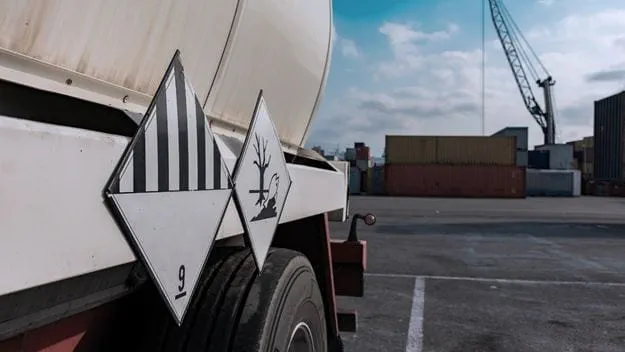
Hazard class 8: Corrosive substances
The dangerous goods regulations define corrosive substances as a substance that by a chemical action, causes irreversible damage to the skin, or in the case of a leakage, will materially damage or even destroy other goods or the means of transport. Corrosive substances can be both a solid and liquid form.
Packing groups
Although Class 8 dangerous goods do not have any other divisions, corrosive substances have been assigned a packing group which indicates the degree of danger.
Packing Group I: Substances presenting high danger
Packing Group II: Substances presenting medium danger
Packing Group III: Substances presenting low danger
| Packing group | Exposure time | Observation period | Effect |
| I | ≤ 3 min | ≤ 60 min | Full thickness destruction of intact skin |
| II | > 3 min ≤ 1h | ≤ 14 d | Full thickness destruction of intact skin |
| III | > 1 h ≤ 4h | ≤ 14 d | Full thickness destruction of intact skin |
| III | - | - | Corrosion rate on either steel or aluminium surfaces exceeding 6.25 mm a year at a test temperature of 55 ºC when tested on both materials |
Examples of commonly transported explosives
Class 8 dangerous goods examples are acid batteries fluid, alkali batteries fluid, formaldehyde, hydrochloric acid, iodine, methacrylic acid, nitric acid, sulphuric acid.
You may also be interested in
Haben Sie Fragen? Avez-vous des questions? Avete domande?
Our experts are ready to help. Get in touch and we'll find the solution you need.




